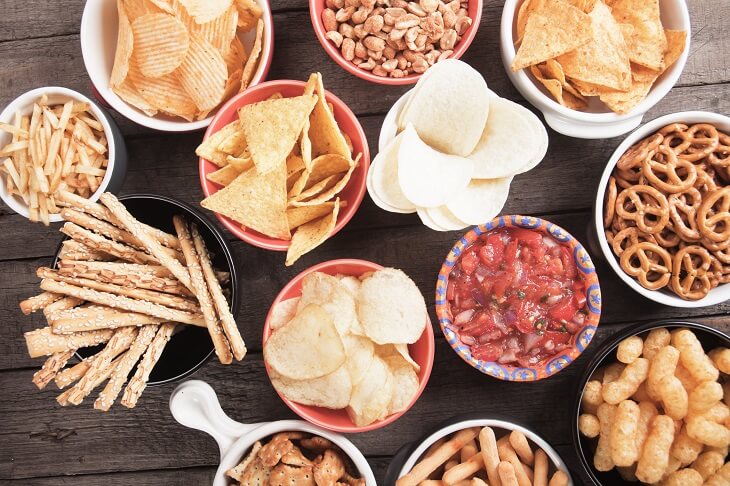If you can happily say no to chocolate and cake but are utterly powerless if someone pops a bowl of salty chips or nuts in front of you, then it’s probably safe to say you’re familiar with the notion of salt cravings.
But just why is it that salty snacks can be so addictive? Well, scientists from the Beth Israel Deaconess Medical Center in Boston might now be able to explain it a little further, after looking at how certain brain signals are triggered when we crave the white stuff.

Brain signals
The research team looked at a specific sub-group of neurons, located in the ‘nucleus of the solitary tract’ (NST – a cluster of nerves near the base of the brain), that drives our appetite for salt.
Neurons are basically cells within the nervous system that play a central role in transmitting messages to and from the brain, and while the neurons in question were discovered a decade ago, by co-corresponding author Professor Joel Geerling, exactly what was going on with them in terms of triggering salt cravings was still a bit of a mystery.
Read: 12 surprising, non-food related uses for salt
Dr Jon Resch, a co-author of the research published in Neuron, and colleagues in the Division of Endocrinology, Diabetes and Metabolism at the teaching hospital of Harvard Medical School, say more research is needed. Their findings shed light on the brain circuits involved in salt cravings, and could lead to the development of drugs to regulate salt urges in people with certain hormone deficiencies associated with over-consumption of sodium.
“We identified a specific circuit in the brain that detects sodium deficiency and drives an appetite specific for sodium to correct the deficiency,” said Dr Resch. “In addition, this work establishes that sodium ingestion is tightly regulated by the brain, and dysfunction in these neurons could lead to over or under consumption of sodium – which could lead to stress on the cardiovascular system over time.”

Leading health threat
These neurons aren’t the only factor in salt cravings. Certain medical conditions, deficiencies and hormonal imbalances can sometimes play a part. Plus, we do of course need salt to survive; a lack of sodium (salt) can be extremely detrimental.
However, over consumption of salt is generally a far bigger problem and a key risk factor in many major diseases, such as high blood pressure, stroke and heart disease – which is why unravelling the mystery of salt cravings is such an important topic.
According to SA Health, an acceptable amount of sodium for healthy adults in Australia is 460 to 920mg per day, with the upper limit being 2300mg of sodium per day – equivalent to 6 grams of salt or about one-and-a-half teaspoons.
The average Australian gets around 9 grams of salt per day, that’s much more salt than the recommended upper limit.
The trouble is, many foods already contain all the salt we need, so by the time you start adding salt to cooking or sprinkling it on food – not to mention the high levels of ‘hidden’ salt in many processed foods – it’s little wonder we’re consuming far too much.
Read: Is salt good for you after all?
Simple ways to reduce your salt intake
Concerned about your salt intake? Small, daily steps can add up to a big difference to your overall health.
1. Stop salting the water when you cook. Those potatoes and vegetables will cook just as well without it.
2. Don’t fancy bland food? Flavour meals with spices instead – many spices will add extra health benefits too, and there are tons of options to explore.
Read: The health benefits of ginger you may not know about
3. Cook sauces from scratch. Ready-made jars of things such as pasta and curry sauces are often loaded with extra salt, and the same goes for packaged soups. Making your own might be a lot easier than you think.
4. Go easy on the cheese and butter. Life’s too short to deprive yourself, but certain cheeses can be high in salt, so check the labels and enjoy them as occasional treats.
5. Be a salt sleuth.When doing the shopping, look at the sodium content on the nutrition information panel, and buy ‘no added salt’, ‘low salt’ and ‘salt reduced’ alternatives, particularly for canned and packet foods, and everyday items such as margarine, butter, bread and breakfast cereals.
Do you monitor your salt intake? Do you check nutrition labels at the grocery store? Let us know in the comments section below.
– With PA
If you enjoy our content, don’t keep it to yourself. Share our free eNews with your friends and encourage them to sign up.

